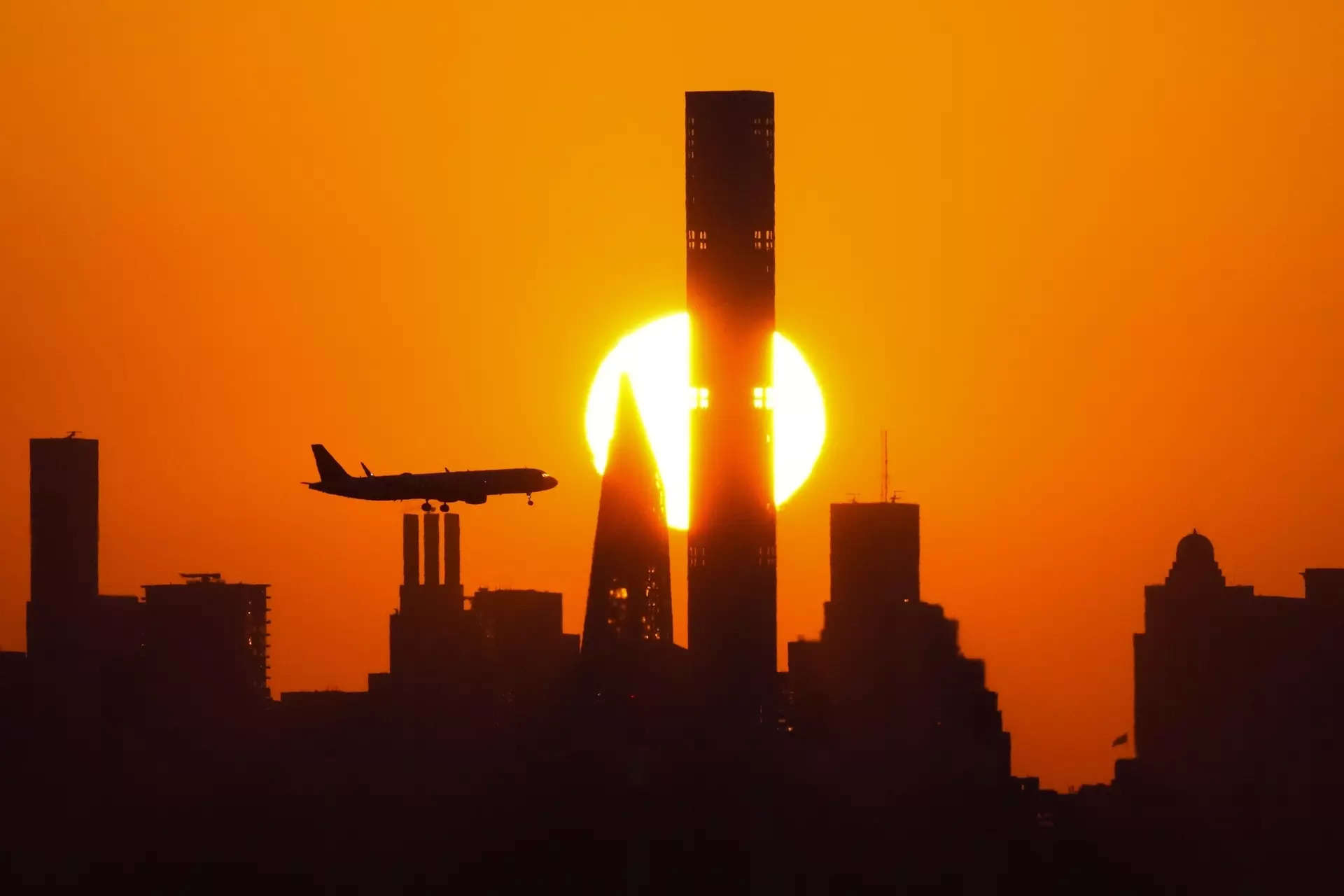Business
Mumbai airport congestion: Flights forced to hover for 40-60 minutes, 2000 kg extra fuel burned per hour

[ad_1]
NEW DELHI: In an effort to address growing concerns over flight delays and fuel wastage, the ministry of civil aviation (MoCA) has shed light on the imposition of flight curbs at Mumbai airport. The ministry attributes the curbs to congestion and excess capacity on the runways, forcing flights to hover over the city for extended periods, resulting in significant fuel consumption.
A senior MoCA official expressed alarm at the staggering fuel consumption during prolonged circling times and the financial impact is substantial. The ministry said that considering that an aircraft on average consumes 2000kg of fuel per hour, such a long duration of circling time causes significant wastage of fuel for the aircrafts ranging from 1.7 kiloliters of jet fuel (approximately . costing around Rs 1.8 lakh) for a 40-minute circling time in air to around 2.5 Kilolitres of jet fuel (approximately . costing around Rs. 2.6 lakhs) for a 60-minute circling time.
The ministry highlighted the potential repercussions for consumers, affecting both passengers and airlines adversely. Inefficiencies in airport operations lead to longer wait times and inordinate delays, exacerbating the situation for all stakeholders involved.
“It is to be understood that such an increase in fuel costs would eventually be borne by the consumers. This also has a cascading effect on the efficiency of airports operations leading to a longer wait time, inordinate delays, affecting both passengers and airlines adversely,” ministry said.
An analysis by the Airport Authority of India identified a bottleneck during high intensity runway operations (HIRO) hours, particularly from 0800 to 1100 hrs and 1700 to 2000 hrs general aviation and military aircraft operations further worsened congestion, particularly during peak hours.
The root causes were traced to excessive slot distribution, non-adherence to slots by airlines, and non-scheduled operations during peak hours. Despite the airport operator’s dual role as slot provider and manager, proactive measures to regulate air traffic movements were found lacking.
To address the issue, the Ministry of Civil Aviation intervened, issuing directives to the airport operator through the Airport Authority of India (AAI) on January 2. These directives, communicated via Notice to Air Men (NOTAMs), restricted air traffic movements during HIRO and non-HIRO periods, reducing the number of permitted flights per hour. General aviation aircraft operations during HIRO periods were also curtailed.
“The airport operator, being the slot provider as well as the manager of slots for the airlines, should have proactively taken steps to streamline and regulate the air traffic movements, to resolve this problem. However, since no such action was initiated by them, the ministry of civil aviation has had to step in,” ministry said.
The government emphasized that these measures were essential for airspace safety, operational efficiency, and passenger satisfaction. The Ministry urged the Mumbai International Airport Limited (MIAL) to ensure compliance with the prescribed restrictions by all airlines.
Recognizing the need to strike a balance between the needs of airport operators and airlines, the Government of India reiterated its commitment to facilitating a seamless and fulfilling flying experience for passengers departing from Mumbai Airport.
(With inputs from agencies)
A senior MoCA official expressed alarm at the staggering fuel consumption during prolonged circling times and the financial impact is substantial. The ministry said that considering that an aircraft on average consumes 2000kg of fuel per hour, such a long duration of circling time causes significant wastage of fuel for the aircrafts ranging from 1.7 kiloliters of jet fuel (approximately . costing around Rs 1.8 lakh) for a 40-minute circling time in air to around 2.5 Kilolitres of jet fuel (approximately . costing around Rs. 2.6 lakhs) for a 60-minute circling time.
The ministry highlighted the potential repercussions for consumers, affecting both passengers and airlines adversely. Inefficiencies in airport operations lead to longer wait times and inordinate delays, exacerbating the situation for all stakeholders involved.
“It is to be understood that such an increase in fuel costs would eventually be borne by the consumers. This also has a cascading effect on the efficiency of airports operations leading to a longer wait time, inordinate delays, affecting both passengers and airlines adversely,” ministry said.
An analysis by the Airport Authority of India identified a bottleneck during high intensity runway operations (HIRO) hours, particularly from 0800 to 1100 hrs and 1700 to 2000 hrs general aviation and military aircraft operations further worsened congestion, particularly during peak hours.
The root causes were traced to excessive slot distribution, non-adherence to slots by airlines, and non-scheduled operations during peak hours. Despite the airport operator’s dual role as slot provider and manager, proactive measures to regulate air traffic movements were found lacking.
To address the issue, the Ministry of Civil Aviation intervened, issuing directives to the airport operator through the Airport Authority of India (AAI) on January 2. These directives, communicated via Notice to Air Men (NOTAMs), restricted air traffic movements during HIRO and non-HIRO periods, reducing the number of permitted flights per hour. General aviation aircraft operations during HIRO periods were also curtailed.
“The airport operator, being the slot provider as well as the manager of slots for the airlines, should have proactively taken steps to streamline and regulate the air traffic movements, to resolve this problem. However, since no such action was initiated by them, the ministry of civil aviation has had to step in,” ministry said.
The government emphasized that these measures were essential for airspace safety, operational efficiency, and passenger satisfaction. The Ministry urged the Mumbai International Airport Limited (MIAL) to ensure compliance with the prescribed restrictions by all airlines.
Recognizing the need to strike a balance between the needs of airport operators and airlines, the Government of India reiterated its commitment to facilitating a seamless and fulfilling flying experience for passengers departing from Mumbai Airport.
(With inputs from agencies)
#Mumbai #airport #congestion #Flights #forced #hover #minutes #extra #fuel #burned #hour






